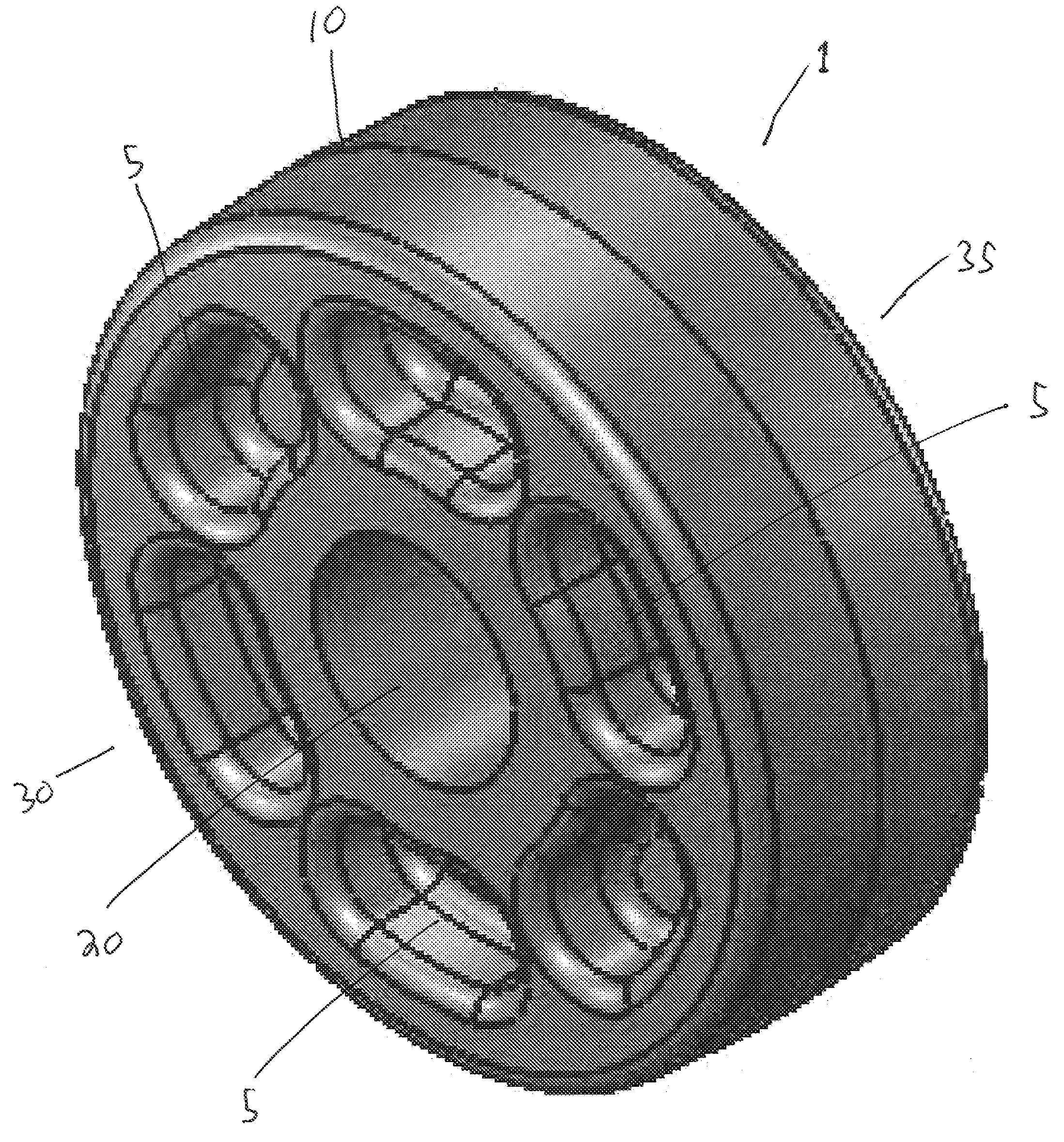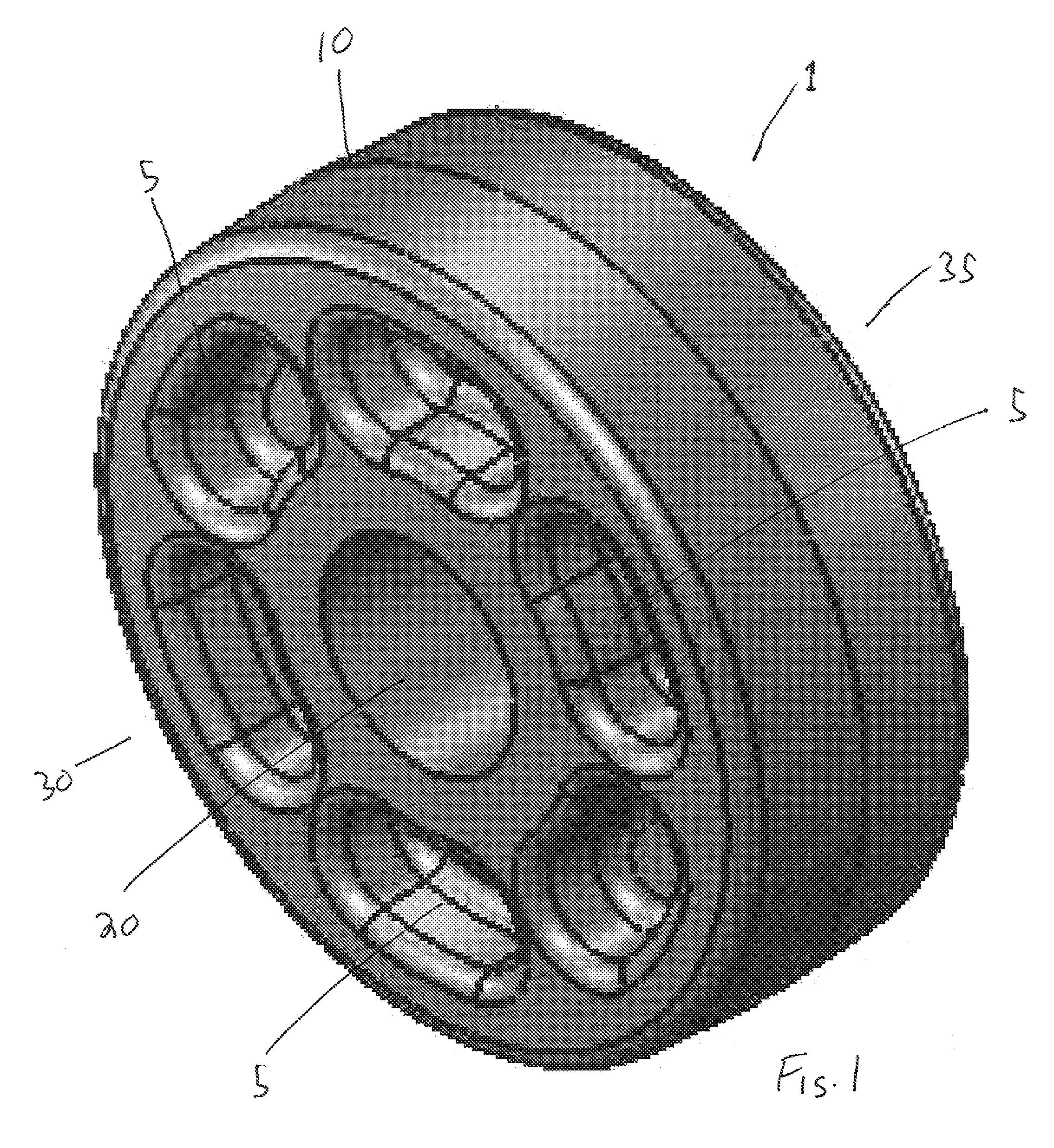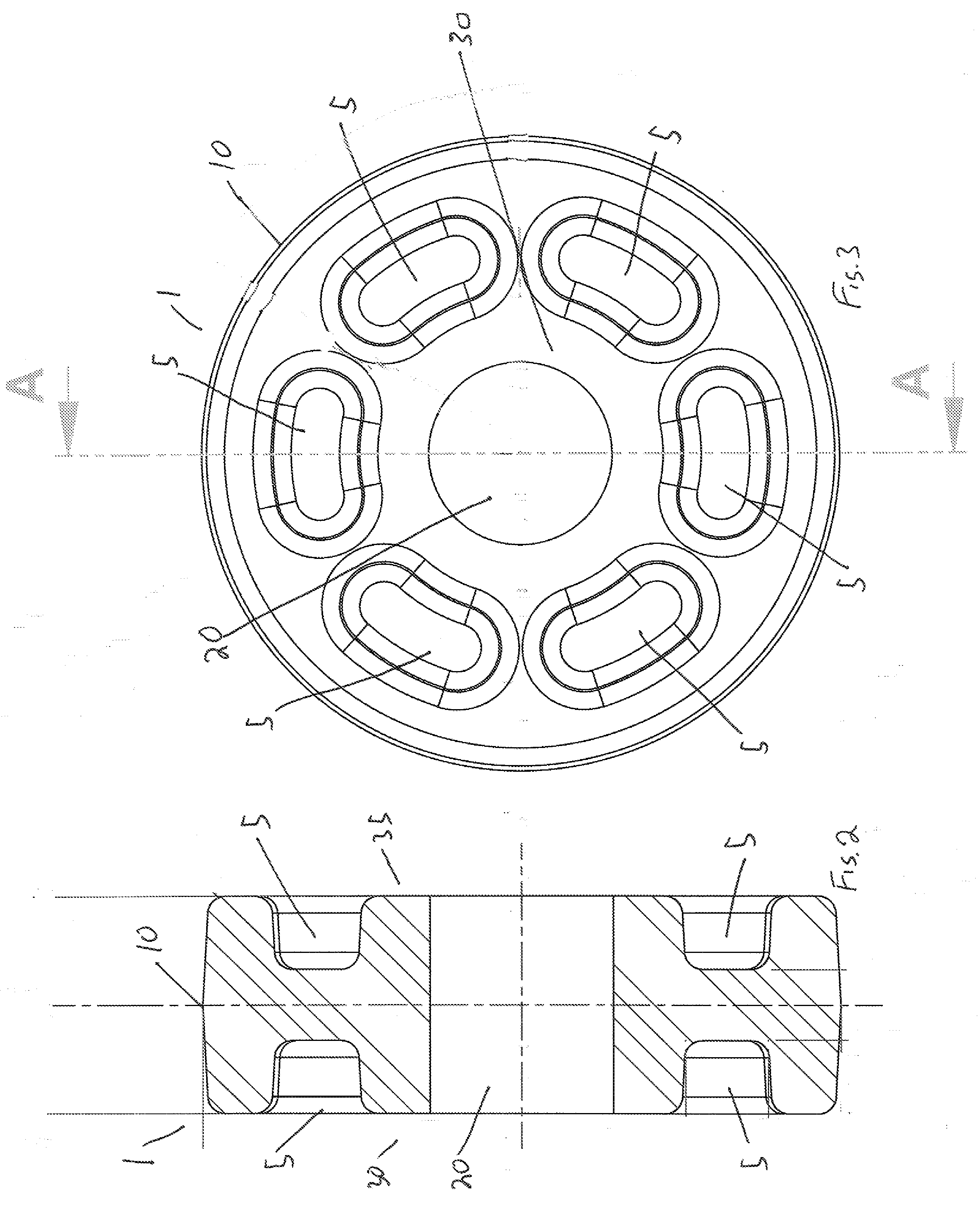Coaxial RF Device Thermally Conductive Polymer Insulator and Method of Manufacture
a technology of thermal insulation and polymer insulator, which is applied in the direction of insulated conductors, power cables, cables, etc., can solve the problems of increasing the heat generated in such devices, damage or destroy devices, and increasing the amount of heat generated
- Summary
- Abstract
- Description
- Claims
- Application Information
AI Technical Summary
Benefits of technology
Problems solved by technology
Method used
Image
Examples
Embodiment Construction
[0018]In-line coaxial devices utilize insulators to position elements of the inner conductor coaxially within the outer conductor, without electrically coupling the inner and outer conductors. In the prior art, the insulator material was selected primarily based upon the dielectric value, ease of fabrication and cost. Typically, the insulators are polytetrafluoroethylene (PTFE) or polyetherimide (PEI) both of which have advantageous dielectric properties but that are both relatively non-thermally conductive.
[0019]The inventor has recognized that these insulators and any enclosed air space between the inner conductor and the surrounding outer conductor create an insulated thermal pocket around a section of inner conductor and any devices coupled to the inner conductor there between. In devices according to the invention, the thermal insulating effect of the prior relatively non-thermally conductive insulators may be significantly reduced by application of a thermally conductive polym...
PUM
 Login to View More
Login to View More Abstract
Description
Claims
Application Information
 Login to View More
Login to View More - R&D
- Intellectual Property
- Life Sciences
- Materials
- Tech Scout
- Unparalleled Data Quality
- Higher Quality Content
- 60% Fewer Hallucinations
Browse by: Latest US Patents, China's latest patents, Technical Efficacy Thesaurus, Application Domain, Technology Topic, Popular Technical Reports.
© 2025 PatSnap. All rights reserved.Legal|Privacy policy|Modern Slavery Act Transparency Statement|Sitemap|About US| Contact US: help@patsnap.com



